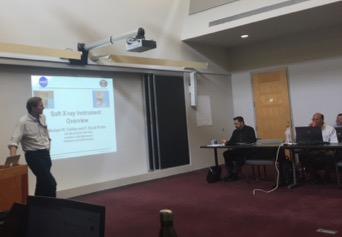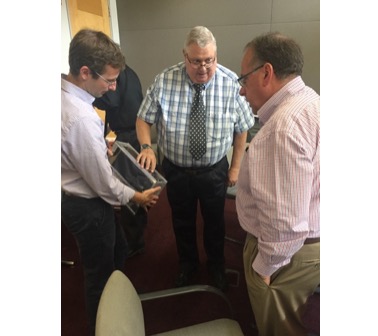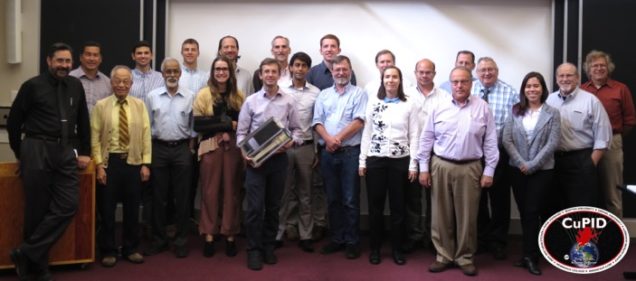First Things First: A Design Review Meeting
What is a CDR?
In many areas of work, before a large project progresses far from concept into design, fabrication, and testing, an important meeting must be scheduled. In this meeting, team members present progress and future work to colleagues as well as a set of second party reviewers. This type of meeting is called a Critical Design Review, or CDR for short. Commonplace for development of spaceflight hardware, CDR’s are important to a project because they allow issues to be discovered before significant progress on a project has been made. Issues caught in a CDR can prevent extensive re-working of a project.
Last week, the CuPID team met at John’s Hopkins University for a CDR with external reviewers from NASA Goddard, Virginia Tech and John’s Hopkins, Applied Physics Lab (APL). In this meeting, team members from the various eight institutions presented their designs of the many subsystems in CuPID. The CuPID CubeSat Observatory is a custom spacecraft with many systems being designed for the first time, many in parallel.

Michael Collier (NASA Goddard) begins his presentation about the main science component of CuPID, the Soft X-ray telescope.
With 8 different organizations contributing to the mission, appropriate communication between people and components is key. The team spent significant time at the CDR going over the plans for interfacing components. A clean interface plan will ensure a part developed by team A can plug into a part developed by team B and all of them put together can run software developed by team C which can them be tested by team D. (…in reality this goes all the way to team H!)

Brian Walsh (BU) Chuck Smith (AMA) and Kevin Jackson (Flexitech Aerospace) discuss the potential communications antenna positioning on the spacecraft.
A second area that garnered a lot of discussion was the pointing of the spacecraft. There are a huge number of intertwined variables that impact the best way to point the spacecraft. The spacecraft wants to generate as much power as possible, but it also needs to point the science instrument in a useful direction. At the same time, the star tracker cannot point at the Earth or the sun, and the GPS antenna must be in the appropriate position to obtain positional information. These and many other considerations all fed into the discussion of optimizing the performance of the spacecraft.
Now What?
Though daunting, last week’s CDR showed how well the program has been adapting to the difficulties of cross-team (and cross-state) cooperation. Different teams are spearheading power systems, scientific payload, software, and ADCS/EPS suite, although member groups have collaborated, this full combination of teams has never worked together before as a unit. A playbook of how and when people in the unit would communicate and act did not exist prior to the project.
This reinforces CDR’s importance — to ensure the subsystems are aligned, surface any discrepancies and cross-platform/cross-subsystem integration issues, and agree on a method to communicate future changes.
The team left CDR with a number of important action items that will help bring the satellite closer to its final design. The most notable areas of focus involve the interfacing of subsystems; with 8 entities working on various components, a common-ground is essential so the individual parts can fit/work together in unison.

The CuPID CubeSat Observatory team at John’s Hopkins University for the CDR.

